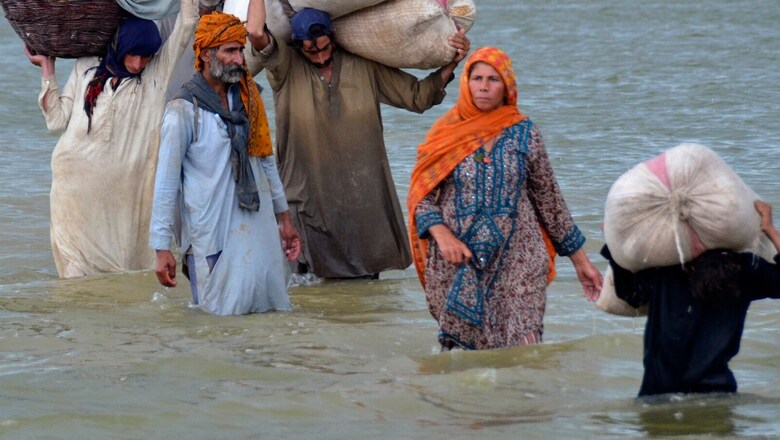Back-to-back Weather Extremes Likely Over Same Region if Warming Breaches 1.5-Degree Mark: IIT Study

views
India is likely to witness an increased risk of back-to-back extreme weather events – major heatwaves and extreme rainfall – over the same region if average global temperatures breached the 1.5-degree Celsius mark, shows a new study.
The latest analysis supports concerns raised by India over its increased vulnerability to climate change in the UN Climate Change (COP27) Conference that concluded early this week in Egypt’s Sharm-el-Sheikh.
“We know that heatwaves are getting longer and more intense, along with rainfall extremes, but when such extremes occur one after another over the same region, then the impact can be particularly severe. This leaves no time for people to recover,” says lead author Professor Vimal Mishra from IIT Gandhinagar.
“Sequential extreme – an example of which was seen in Pakistan this year – where heatwaves were followed by floods was just a glimpse of what probably awaits India in coming years,” he said.
Long, Intense Heatwaves
The team, which published its findings in peer-reviewed journal One Earth, has examined the characteristics of all major heatwaves that hit India in the last 70 years from 1951 to 2020. The five occurrences in 1995, 1998, 2012, 1966, and 1984 were found to be among the most severe on all accounts.
The 1995 mega heatwave, which lasted about 13 days, was mainly centred in north India but ended up affecting about half of the country and claimed over 1,700 lives across several states. The second most damaging heatwave struck in 1998 lasting for about 14 days and affected 40 per cent of the country and resulted in over 2,600 deaths, with 1,300 deaths in Odisha alone.
India is already a hotspot for increased temperature extremes, the study highlighted. At least 90 per cent of the country experiences heatwaves during May and June, and the frequency has increased in recent decades.
“We found a notable rise in the duration of these heatwaves from the period of 1951 to 1985 to the current period of 1986 to 2020. There isn’t just a significant increase in the duration of these heatwaves, but their intensity, area of impact, and overall severity score,” Mishra told News18 citing the 2022 summer season, which saw the hottest March on record for India.
The study further goes on to project that the duration of heatwaves is expected to increase from three (±0.8) days in the current climate (1981-2010) to as high as 11 (±5) days during 2071-2100, even when the world is able to limit warming to less than 1.5 degrees Celsius.
Under the same low emission pathway, the area impacted by them is also expected to increase from 8 per cent (±3%) in the current climate to as high as 39 per cent (±14%) in the coming years, said the team that made its observations using the five coupled CMIP6 global climate models (GCMs).
Adaptation challenges
“It is extremely critical to mitigate climate change to reduce the risk of sequential extremes and their impact on people, agriculture and infrastructure. But we also desperately need to put into place adaptation measures to increase the resilience of vulnerable populations. Even before people get time to recover from the previous disaster, they would be hit by another in a short span of time. Losing two seasons of crops would have wide consequences,” Mishra said, adding that the study aimed to quantify this increased risk of consecutive extremes in the future that was not well-documented so far.
The study also shows that these back-to-back extremes tend to impact a larger area of the country during El Nino – when surface waters in the Pacific Ocean are warmer, compared to La Nina when sea waters are relatively cooler indicating the prominent role of climate variability.
According to the team, the likelihood of mega heatwaves under the current climate (1981-2010) is relatively low, but their frequency is projected to increase to seven in the last 30 years of this century. The study identified mega heatwaves as those that exceeded the overall severity of the worst (1995) heatwave during the observed climate of 1951-2020.
With the world already hotter by 1.1 degrees than it was in the late 19th century, the risk is already higher than ever before.
Read all the Latest India News here

















Comments
0 comment